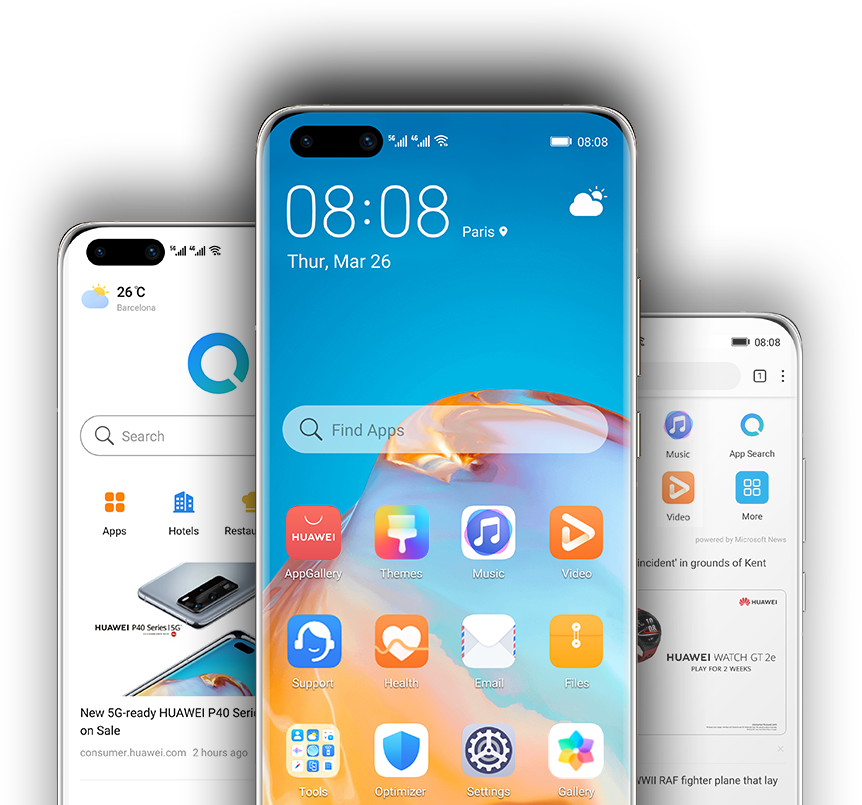Petal Search highlights barriers facing Huawei

A US ban shut Huawei out of Google Play Services. The Chinese tech giant hopes Petal Search will make that less of a problem.
Huawei sold more phones than any other company last quarter. It overtook Samsung, mainly thanks to strong sales in China.
For Huawei, success in the home market is a bright spot. Things are less positive in the rest of the world.
Last year the US government issued an embargo that stops the company from using Google’s version of Android.
This makes it harder for people who purchase new Huawei phones to find the big name apps. Among the ones that are hard to get are WhatsApp, Instagram, YouTube, Twitter and Google Maps.
Popular apps missing
Not having the most popular apps is a barrier to selling phones. Ten years ago Microsoft’s Windows Phone operating system floundered because the world’s largest software company didn’t include the most popular apps.
It’s technically possible to run a lot of popular Android apps on a Huawei phone, although paid apps and apps requiring subscriptions can be extra tricky. To get them users are required to do a lot of the leg work.
Some popular Android apps can work through a browser, in many cases with less functionality.
In practice the workarounds can be tedious and laborious, the kind of dreary repetitive tasks that technology was meant to eliminate.
That may not be a barrier to people reading this blog post, it will be a huge problem for less tech-savvy phone buyers. There’s another problem to consider that we’ll get to in moment.
Easier, not easy
Huawei aims to make the task easier. Its main, long term, strategy is a Huawei-branded App Store. Many apps have made it to the Huawei App Store. But there are millions, Huawei says around three million, more apps out there.
The company is racing to fill the Huawei App Store, but that will take time. It needs to convince developers to offer tweaked versions of their software. Huawei’s base software is Android, which means Android apps don’t need much work to make the cut. Yet, building Huawei specific versions is not going to be a priority for every developer.
Petal Search is Huawei’s interim alternative. It lets users search for non-Google Play versions of Android apps. In many cases these can be downloaded from developer sites or from third party app libraries.
While it works fine on one level, it is far from perfect. For a start, apps stores have conditioned users to expect timely, automatic updates when software is refreshed. Petal Search doesn’t fix that. You could find yourself running insecure versions of apps – as if the Android world wasn’t insecure enough.
And this brings us to the other big problem. App store owners are supposed to vet apps for quality and security flaws. This doesn’t always work as it should, but there is safety going through the big official app stores.
Petal Search risks
Petal Search can leave you wandering through the seedy backstreets. It can be risky.
Huawei doesn’t need to worry about Chinese customers, they don’t use Google Play Services. There are other countries where Google is less important. But for the western world, the company has millions of phones in circulation that will, in the coming years, be up for renewal. If the Huawei app experience disappoints, they won’t be upgrading to a Huawei phone.
And that’s the huge barrier facing Huawei. It doesn’t matter how great the hardware is, nor does it matter if Huawei sharpens its pencil and drops prices to bargain basement levels. Without access to the apps phone buyers want to run, those fancy phones are lifeless slabs of glass, plastic and metal. They will be almost impossible to sell.
Member discussion